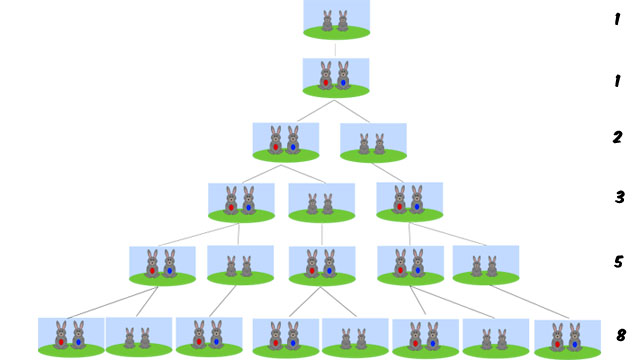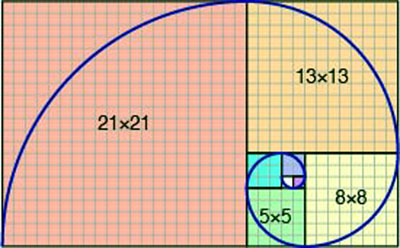The Beauty of Numbers – 2
- POSTED ON: 11 Aug, 2017
- TOTAL VIEWS: 1670 Views
- POSTED BY: Chari Vijayaraghavan
- ARTICLE POINTS: 100 Points
In Mathematics, the Fibonacci numbers are the numbers in the following integer sequence – 1, 1, 2, 3, 5, 8, 13, 21, 34, 55….and so on, called the Fibonacci sequence. It is characterised by the fact that every number after the first two is the sum of the two preceding numbers. Sometimes, the series is taken with 0 and 1 as the first two terms. From nature to Mathematics to Sanskrit, it has been an interesting area of research!
The Fibonacci sequence is named after Italian mathematician Leonardo of Pisa, known as Fibonacci. The original problem that Fibonacci investigated (in the year 1202) was about how fast rabbits could breed in ideal circumstances. Suppose a newly-born pair of rabbits, one male, one female, are put in a field. Rabbits are able to mate at the age of one month so that at the end of its second month a female can produce another pair of rabbits. Suppose that our rabbits never die and that the female always produces one new pair (one male, one female) every month from the second month on. The puzzle that Fibonacci posed was – how many pairs will there be in one year (or at the start of every month? Well, the series would look something like this…

That’s a bit of an ideal scenario, but in nature, they appear in branching in trees, phyllotaxis (the arrangement of leaves on a stem), the fruit sprouts of a pineapple, the flowering of an artichoke, an uncurling fern, the arrangement of a pine cone’s bracts etc.

The Fibonacci series is related to the golden ratio as well. If we take the ratio of two successive numbers in Fibonacci’s series, (1, 1, 2, 3, 5, 8, 13, ..) and divide each by the number before it, we will find the following series of numbers:
1/1 = 1, 2/1 = 2, 3/2 = 1.5, 5/3 = 1.666…, 8/5 = 1.6, 13/8 = 1.625, 21/13 = 1.61538…
If we represent this visually, it is a similar spiral to the golden spiral!

That was an interesting read about the Fibonacci series. Can you try and find more examples? See you soon!
Image Sources : Wikimedia Commons | Jahobr